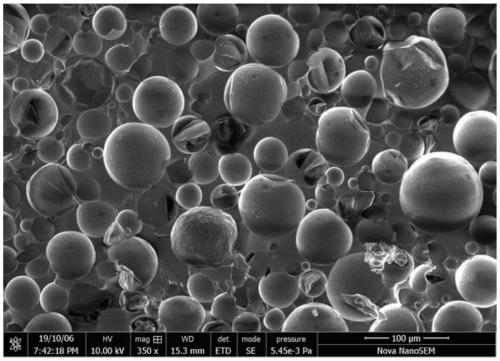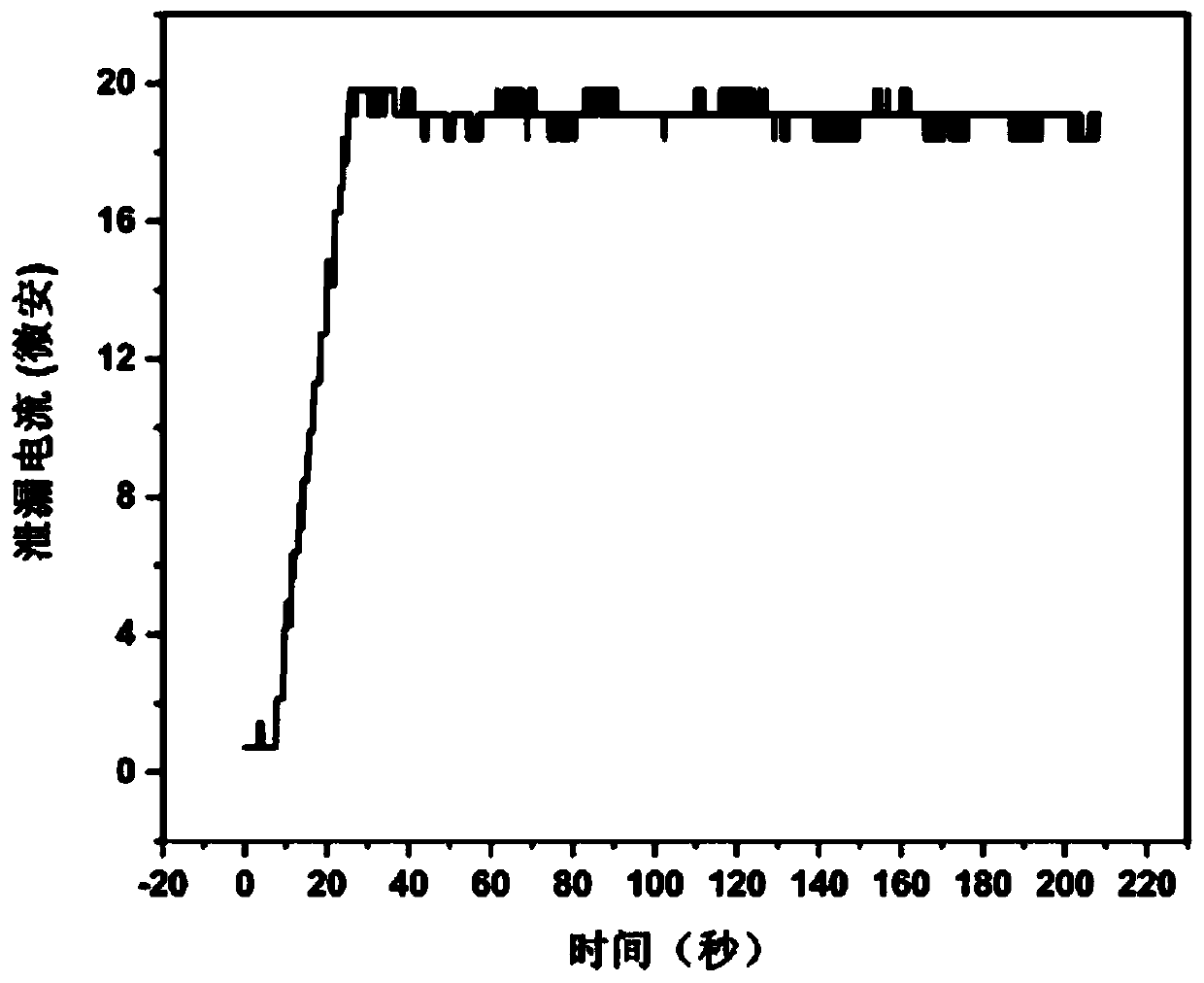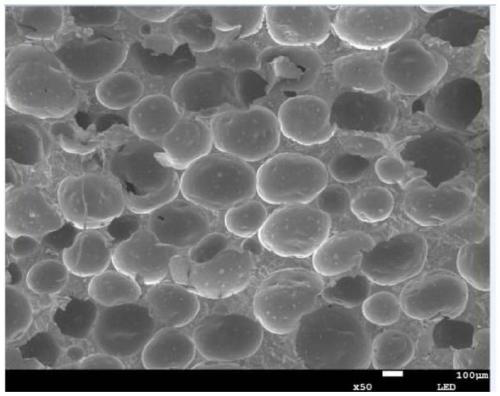Preparation method of composite insulation cross arm core body
A composite insulation and core technology, applied in the field of composite insulation cross-arm core production, can solve the problems of high water absorption, easy hydrolysis and high water absorption at the inner insulation interface
- Summary
- Abstract
- Description
- Claims
- Application Information
AI Technical Summary
Problems solved by technology
Method used
Image
Examples
Embodiment 1
[0026] A method for preparing a composite insulating cross-arm core, comprising the following steps:
[0027] a. Weigh raw materials, weigh the following raw materials by weight: 21125-28125 parts of red material; 25000-28000 parts of white material; 925.5-1100.26 parts of hollow organic microspheres; ~300.5 parts; dispersant 1265~1525 parts; red material is any one of the following: triethylenediamine, dimethylaminoethyl ether, stannous octoate, pentamethyldiethylenetriamine; white material is E -51 type epoxy resin; the silane coupling agent is γ-aminopropyltriethoxysilane; the defoamer is any one of the following: polyoxyethylene polyoxypropylene pentaerythritol ether, polyoxyethylene polyoxypropylene Alcohol amine ether, polyoxypropylene glyceryl ether and polyoxypropylene polyoxyethylene glyceryl ether, polydimethylsiloxane; the dispersant is any one of the following: fatty acids, aliphatic amides or esters;
[0028] b. Prepare modified hollow organic microbeads, mix the...
Embodiment 2
[0034] A method for preparing a composite insulating cross-arm core, comprising the following steps:
[0035] a. Weigh raw materials, weigh the following raw materials in parts by weight: 24600 parts of red material; 26500 parts of white material; 1012.88 parts of hollow organic microspheres; 481 parts of silane coupling agent; The material is triethylenediamine; the white material is E-51 epoxy resin; the silane coupling agent is γ-aminopropyltriethoxysilane; the defoamer is polyoxyethylene polyoxypropylene pentaerythritol ether; the dispersant is fatty acids;
[0036] b. Prepare modified hollow organic microbeads, mix the hollow organic microbeads weighed in step a and the silane coupling agent, and stir for 5 minutes at a rotating speed of 1000 to 1500 r / min to obtain modified hollow organic microbeads;
[0037]c. prepare the core body filling primary material, mix and stir the red material weighed in step a and the modified hollow organic microspheres obtained in step b (...
Embodiment 3
[0042] A method for preparing a composite insulating cross-arm core, comprising the following steps:
[0043] a. Weigh raw materials, weigh the following raw materials in parts by weight: 28125 parts of red material; 28000 parts of white material; 100.26 parts of hollow organic microspheres; 500.5 parts of silane coupling agent; The material is any one of the following: triethylenediamine, dimethylaminoethyl ether, stannous octoate, pentamethyldiethylenetriamine; the white material is E-51 epoxy resin; the silane coupling agent is γ-aminopropyltriethoxysilane; the defoaming agent is any one of the following: polyoxyethylene polyoxypropylene pentaerythritol ether, polyoxyethylene polyoxypropanolamine ether, polyoxypropylene glyceryl ether and polyoxyethylene Propylene polyoxyethylene glyceryl ether, polydimethylsiloxane; the dispersant is any one of the following: fatty acids, fatty amides or esters;
[0044] b. Prepare modified hollow organic microbeads, mix the hollow organi...
PUM
 Login to view more
Login to view more Abstract
Description
Claims
Application Information
 Login to view more
Login to view more - R&D Engineer
- R&D Manager
- IP Professional
- Industry Leading Data Capabilities
- Powerful AI technology
- Patent DNA Extraction
Browse by: Latest US Patents, China's latest patents, Technical Efficacy Thesaurus, Application Domain, Technology Topic.
© 2024 PatSnap. All rights reserved.Legal|Privacy policy|Modern Slavery Act Transparency Statement|Sitemap



